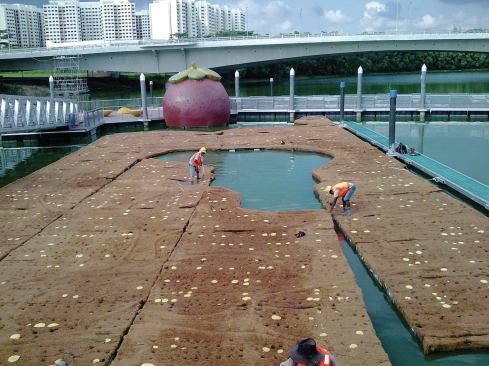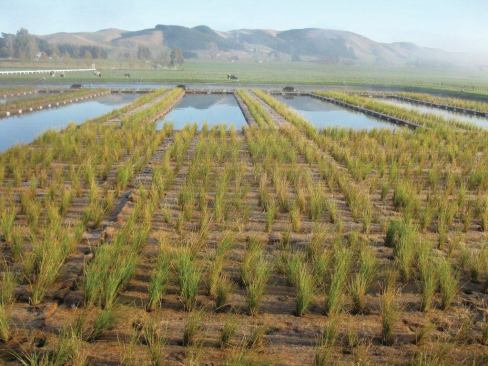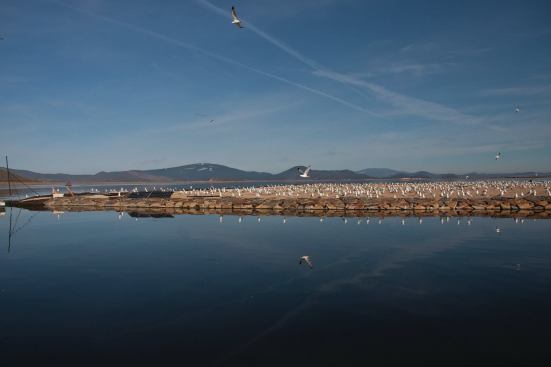Courtesy Anne KaniaFloating Island International
Workers assemble a floating island on a waterway in Singapore.
Real estate salespeople like to claim that no one is making any more of what they have to sell. But don’t tell that to Bruce Kania. His Montana-based company, Floating Island International, has overseen the construction of dozens of artificial islands, the largest of which is more than an acre in size.
The basic structure of these islands is a thick, three-dimensional plastic mesh made from recycled plastic water bottles. Individual modules—which vary in size from 40 to 150 square feet—are joined at the edges with cable and metal plates and layered vertically as needed to build the required thickness. Initial flotation is provided by marine-grade closed-cell foam that’s injected into the base material in a grid pattern.
Once the island is afloat, its porous structure is quickly colonized by microbes and associated marine life, which generate gas bubbles that steadily increase its buoyancy. Rooted surface vegetation extends its roots downward to the water and produces organic matter that becomes soil.
If all that sounds unlikely, consider that natural peat-based floating islands function the same way and can be durable and long-lived. One 30-acre natural floating island in Wisconsin’s Chippewa Falls Flowage—where Kania once worked as a fishing guide—is at least 80 years old and is thickly covered with trees up to 50 feet tall.
So far, most of Floating Island International’s projects have been designed to enhance water quality by taking up phosphorus, nitrogen, and other dissolved nutrients. But according to Kania, there’s no technical reason why floating islands couldn’t also provide space for housing. “For an open-ocean marine environment, you’d probably need an island about 12 feet thick,” he says. “I look forward to retiring to my own country someday.”
JLC contributing editor Jon Vara lives in Cabot, Vt.


